De Havilland DH.110 Sea Vixen Royal Navy Fleet Air Arm
Production Time 9 to 10 weeks
Shipment is by FedEx, UPS or DHL International Express Courier with a normal door-to-door delivery time worldwide of within 2-3 business days after dispatch. Due to the current volatility of world fuel prices, the amount mentioned here is our best estimate for DHL and UPS and may be subject to change at the time of shipping.

Model Description: De Havilland DH.110 Sea Vixen Royal Navy Fleet Air Arm Wood Replica Scale Custom Model Aircraft
Manufacturer: De Havilland
Wingspan: 15.6 Inches (39.6 Centimeters)
Height: 3.3 Inches (8.4 Centimeters)
Scale: 1:39
$239.50
Production Time 9 to 10 weeks
-
United States dollar ($)
-
Pound sterling (£)
-
Euro (€)
-
Australian dollar ($)
-
Canadian dollar ($)
-
Singapore dollar ($)
-
Swiss franc (CHF)
-
Japanese yen (¥)
-
Danish krone (kr.)
-
Hong Kong dollar ($)
-
Norwegian krone (kr)
-
Swedish krona (kr)
-
United Arab Emirates dirham (د.إ)
General Product Description
Our PlaneArt De Havilland DH.110 Sea Vixen Royal Navy Fleet Air Arm model exhibits unique, unrivaled quality and detailed design to come as close as possible to the accuracy of the actual plane. It comes as standard with a robust, durable base or stand which is available in a variety of different finishes designed to match your own personal requirements including solid wood, wood with polished metal supports or adjustable wood wall mount and will be ready within about 9-10 weeks from placement of order.
The De Havilland DH.110 Sea Vixen Royal Navy Fleet Air Arm model is made of the finest kiln dried renewable mahogany wood (commonly known as Lauan or Meranti) which has undergone many stages of carving and meticulous and careful sanding giving the beautiful, finished museum quality masterpiece. Many collectors and model connoisseurs demonstrate their preference for genuine handmade and hand painted mahogany wood models rather than plastic or die cast (diecast) alternatives due to the overall look and totally different feel of the item - we trust you will find the same. We can however, if required produce the same model in Solid Cast Resin so just click and contact us for further information. Our craftsmen and gifted artisans ensure that our finely handcrafted model airplanes match the precise blueprint details of the original aircraft. The paint scheme, markings and parts are closely matched, reflecting the original aircraft. This stylish top-quality desktop replica model will surely enthrall anyone who receives this as a gift and for sure one of the most appropriate and desirably collectable gifts for any aviation enthusiast or avid military jet aircraft collector whilst also displaying a perfect resemblance to the actual real life version.
There are many types of military jet aircraft, but the basic types are bombers, fighters, fighter bombers, spotter planes, transporters, patrol aircraft, trainers, and reconnaissance and observation aircraft. All these types of aircraft are used for different types of missions. If you're a fan of historic or present-day military aviation, our model aircraft will bring the excitement and character of these aircraft right into your own home.
If you require, we can also make the De Havilland DH.110 Sea Vixen Royal Navy Fleet Air Arm model in any other military, government or even private livery or colour scheme you require and if necessary, in a different size or scale. Just click here to contact us with a description or photographs of what you require, and we will let you have a quotation for the necessary customization by return email. We can also make bespoke scale replicas of any other private / civil commercial airliner or airliners, helicopter, glider, gliders with engines, military propeller, warplane jets, biplane, triplane, tail fin, spacecraft, rocket or NASA model you require in any airline, military or civilian livery or colors. We also produce model airships, blimps, dirigibles, blimps, boats, and ship collectibles. Wall plaque or seal for military, government or private customers. Again, by clicking here to contact us just let us know exactly what you need.
The De Havilland DH.110 Sea Vixen: Reigning Sovereign of the Royal Navy Skies
In the annals of aviation history, certain aircraft stand out not just for their sheer prowess in the skies but also for their iconic status and lasting impact on military aviation. Among these, the De Havilland DH.110 Sea Vixen holds a place of honor, particularly within the Royal Navy’s fleet. This formidable carrier-based fighter jet emerged during a time of technological innovation and geopolitical tension, solidifying its reputation as a symbol of British aeronautical excellence during the Cold War era.
Origins and Development:
The genesis of the Sea Vixen can be traced back to the early 1950s when the Royal Navy sought a replacement for its aging fleet of carrier-based fighters. De Havilland, a renowned British aircraft manufacturer, answered the call with the DH.110, a twin-engine, twin-boom aircraft with swept wings and a sleek, futuristic design. Its development marked a departure from traditional piston-engine aircraft, embracing the jet propulsion technology that was rapidly revolutionizing military aviation.
Designed to meet the Royal Navy’s demanding specifications for a high-performance all-weather fighter, the DH.110 underwent extensive testing and refinement before entering production. Its advanced features, including a radar-equipped nose cone, powerful Rolls-Royce engines, and a cutting-edge swept-wing configuration, positioned it as a versatile interceptor capable of engaging both aerial and maritime threats with equal effectiveness.
Operational Capabilities:
Upon its introduction to active service in 1959, the Sea Vixen quickly established itself as a formidable force within the Royal Navy’s carrier strike groups. Equipped with radar-guided missiles and cannons, it was ideally suited for air defense missions, providing vital protection for British naval assets operating in contested waters. Its speed, agility, and robust avionics systems made it a formidable adversary for potential adversaries and a reassuring presence for allied forces.
One of the Sea Vixen’s most distinctive features was its twin-boom configuration, which housed the engines and provided stability during high-speed maneuvers. This design not only contributed to its aerodynamic performance but also gave it a distinctive silhouette that captured the imagination of aviation enthusiasts worldwide. Coupled with its sleek lines and aggressive stance, the Sea Vixen exuded an aura of power and sophistication befitting its role as the Royal Navy’s premier carrier-based fighter.
Notable Achievements:
Throughout its operational lifespan, the Sea Vixen earned a reputation for reliability, versatility, and adaptability in the face of evolving threats and operational requirements. It played a pivotal role in numerous military exercises, training missions, and combat operations, demonstrating its ability to excel in diverse environments and scenarios.
One of the Sea Vixen’s most notable achievements came during the height of the Cold War when it participated in NATO’s maritime patrol and interdiction efforts, helping to deter potential Soviet aggression in the North Atlantic and beyond. Its presence alongside other allied aircraft and naval vessels served as a potent symbol of collective security and resolve, underscoring the Royal Navy’s commitment to safeguarding vital sea lanes and strategic interests.
Legacy and Influence:
Despite being retired from active service in the 1970s, the Sea Vixen’s legacy endures as a testament to British ingenuity, innovation, and engineering prowess. Its contributions to naval aviation and defense technology continue to inspire future generations of engineers, aviators, and historians, serving as a reminder of the critical role played by military aircraft in shaping the course of history.
Today, several well-preserved Sea Vixen aircraft can be found in museums and private collections around the world, serving as tangible reminders of a bygone era when British naval power reigned supreme. Their presence ensures that the memory of the Sea Vixen and its illustrious service to the Royal Navy will endure for generations to come, preserving its rightful place in the pantheon of aviation greatness.
In conclusion, the De Havilland DH.110 Sea Vixen stands as a towering testament to the Royal Navy’s commitment to excellence, innovation, and technological advancement. From its humble origins as a concept on the drawing board to its legendary status as a symbol of British naval power, the Sea Vixen remains an enduring icon of military aviation, revered for its performance, versatility, and unmistakable presence in the skies.
| Weight | 6 kg |
|---|---|
| Dimensions | 17 × 15.6 × 3.3 in |

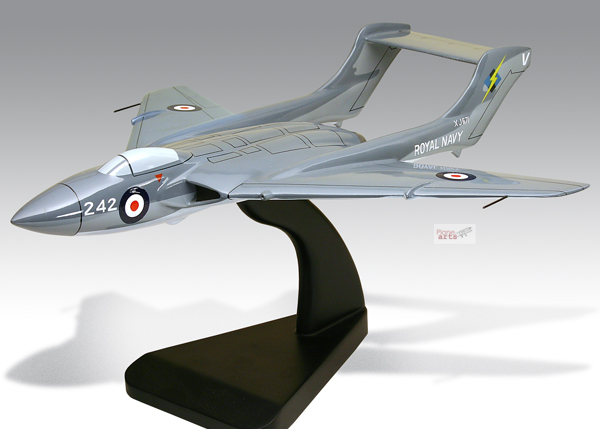
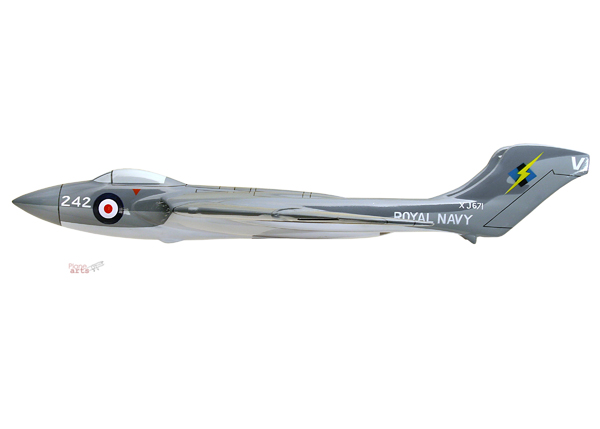
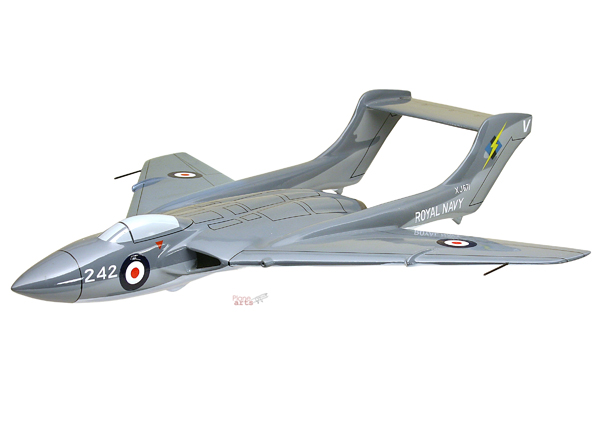
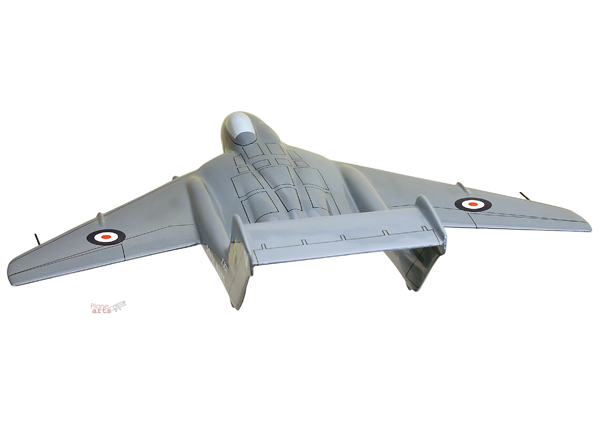
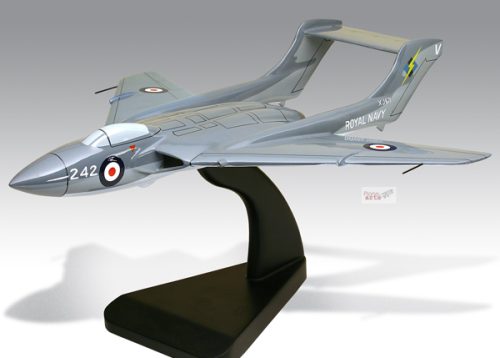
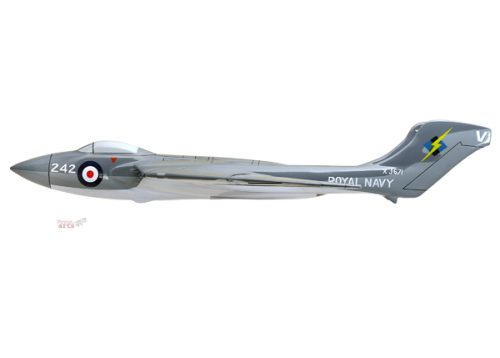
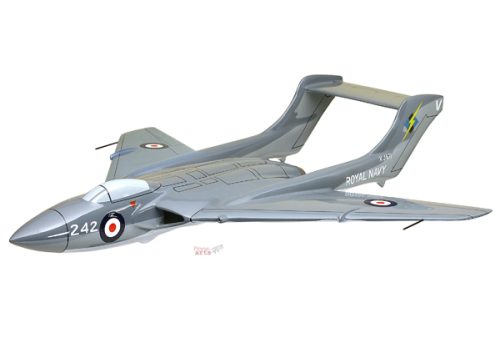
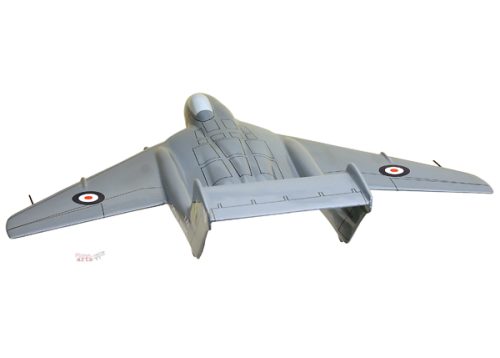
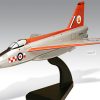
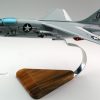
Reviews
There are no reviews yet.